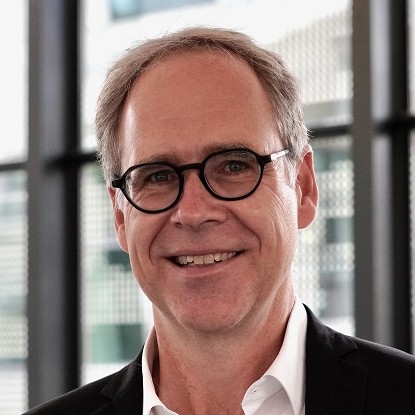Professor Dr. Chang-Hwan Choi
Questionnaire to the Research Fellow
My field of research is fascinating. To laymen I would explain it in the following comprehensible manner:
Water flow through nanoscale channels can create electric power called streaming current. However, such nanoscale hydrodynamic flows have not yet been intensively investigated for practical energy harvesting systems, particularly due to their low energy conversion efficiency resulting from significant frictional energy loss at the channel walls. My research on nanofluidics is to understand fundamentals on such nanoscale hydrodynamic flows and lay the technical foundation for the development of nanofluidic energy harvesting systems with high hydroelectric energy conversion efficiency and output power that are meaningful for real applications. Working as a “hydropower plant on a chip”, the nanofluidic energy harvesting systems can power small autonomous sensors, their networks, and mobile/wearable devices without batteries. Scaled-up systems (e.g., arrays of such devices) can further serve as reliable power stations for large systems with amplified power output. Scavenging energy from water, a sustainable/renewable resource, will enable such systems to be functional with little influence by ambient conditions.
My most important success in research to date is…
Working at Stevens Institute of Technology since 2007, my research perspectives have focused on the fundamental understanding of nanoscale interfacial phenomena and the development of scalable nanomanufacturing techniques that can allow the scientific studies of nanomechanics and the broad applications of nanostructures, ultimately targeted for the engineering of multifunctional/adaptable surfaces, devices, and systems for multiscale civil, military, energy applications. Supported by various funding sources including NSF, ONR, DARPA, US Army, DOE, ACS PRF, USDA, and Industry, I have developed 17 research grants/contracts with a value greater than $5M during my time at Stevens. In total, 5 post-docs, 9 PhD students, and 7 MS students have been trained while working on these projects. The research projects have resulted in significant scholarly achievements including more than 100 peer-reviewed journal and conference articles (total number of citation greater than 2600, h-index: 22, and i10-index: 30), 4 patents issued/pending, and more than 100 presentations at premium conferences, workshops, symposiums, universities and national labs including 4 keynote talks. read on…
I’ve chosen the TU Darmstadt because of…
My host, Prof. Steffen Hardt is one of the world-leading experts in the microfluidics and nanofluidics researches. Especially, his group already developed the theoretical model and foundation on the electrohydrodynamics in superhydrophobic channels, which is critical in my proposed research as well. Thus, I have chosen him and TU Darmstadt to learn from and collaborate with. The Center of Smart Interfaces at the TU Darmstadt is also known as one of the leading centers studying many interfacial phenomena of fluids, which is also one my research interests in general. Thus, I was also very interested in learning the broad research activities at the Center of Smart Interfaces at the TU Darmstadt, while working with Prof. Hardt.
With the help of my host in Darmstadt I would like to…
The ultimate goal of my research is to verify the theoretical prediction that a superhydrophobic surface reducing viscous wall friction with significant slip can increase ionic streaming current in nanoscale channel flow and consequently the electrokinetic energy conversion efficiency and also the output power. To achieve this objective, with the help of my host (Prof. Steffen Hardt) in Darmstadt, I would like to conduct a theoretical and numerical analysis for the electrostatically and hydrodynamically heterogeneous boundary conditions configurable on various types of superhydrophobic surfaces. The resulting streaming current and flow properties will be computed by coupling the Poisson-Boltzmann and the Navier-Stokes equations and employing the fluidic circuitry based on Onsager reciprocal relations. The theoretical results will then be verified with nanofluidic experiments by testing superhydrophobic nanochannels of regulated sizes for varying electrolytes and flow conditions in the future.
Questionnaire for the host
Guest of: Prof. Dr. Steffen Hardt and Prof. Dr. Hans-Jürgen Butt
Department: Mechanical Engineering, TU Darmstadt and Max-Planck-Institut für Polymerforschung, Physik der Grenzflächen
You appreciate in your guest / your guest favourably impressed you by…
his pioneering work in the field of superhydrophobic surfaces. He was among the first to show that with tailor-made superhydrophobic surfaces an enormous drag reduction of hydrodynamic flow can be achieved.
You, your team and the TU Darmstadt benefit from your guest’s…
long-standing experience in the design, fabrication and experimental characterization of superhydrophobic surfaces. At the Institute for Nano- and Microfluidics we also work on superhydrophobic surfaces, but so far our focus was mainly on the theoretical modeling of flow along such surfaces. The work of Professor Choi nicely complements our activities.







